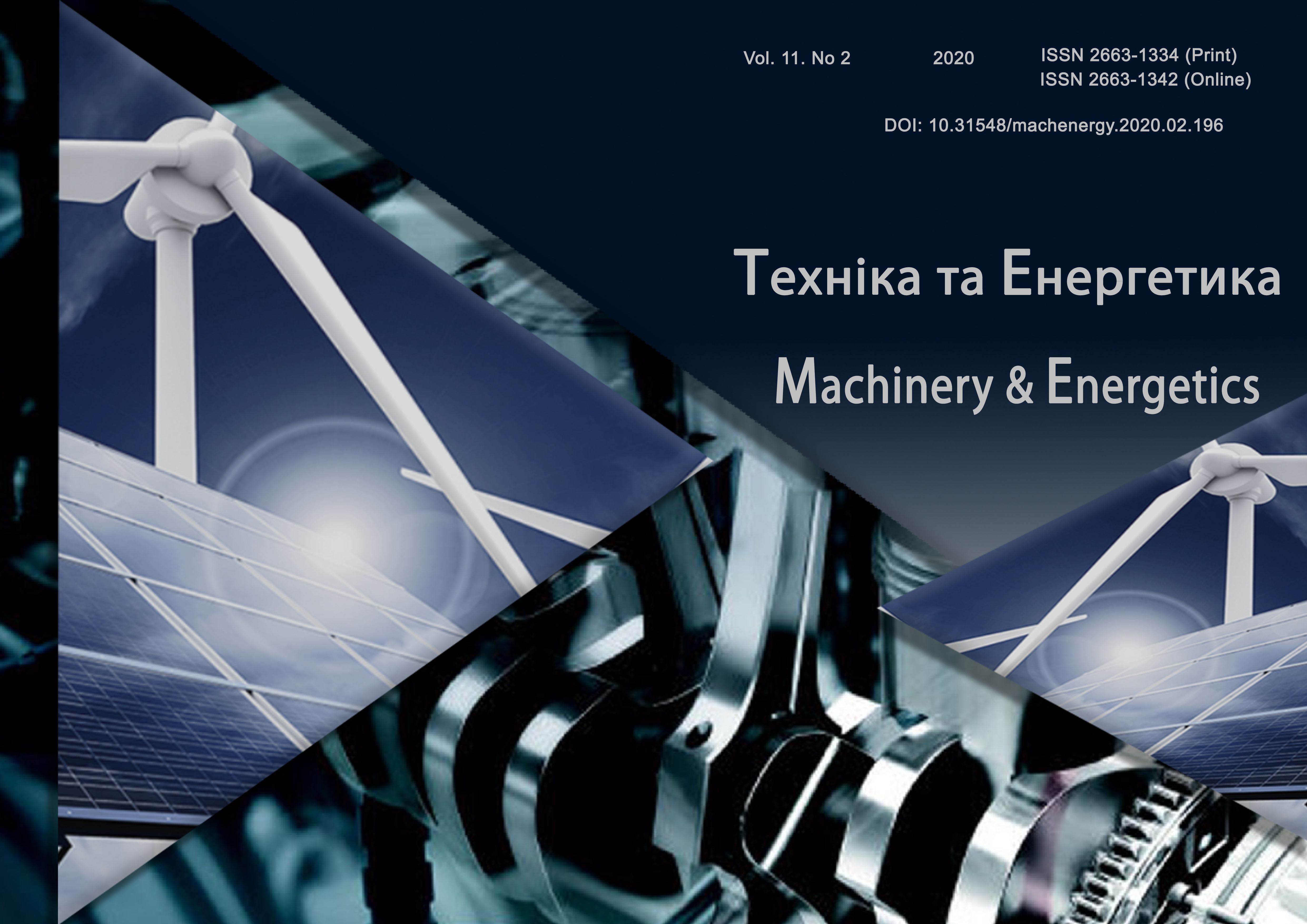Influence of degree of abrasive particle clinging to wear mechanism of soil-cultivating machines operational mechanisms
DOI:
https://doi.org/10.31548/machenergy2020.02.035Keywords:
operational mechanism, soil-cultivating machine, abrasive particle, soil, surface, wear mechanism.Abstract
While the machine parts operate in the composite heterogeneous environment (soil), the following complex processes occur on the friction surface: mechanical, chemical, physical, and thermal. The ratio between the intensity of these processes defines the mechanism of abrasive wear of the surface of the soil-cultivating machines operational mechanisms. In the overwhelming majority of cases, while the soil-cultivating machines operational mechanisms interact with the soil, the intensity of mechanical processes prevails over the intensity of all other processes combined. One of the main factors influencing the intensity of mechanical processes in the area of friction contact between the ground and the surface of soil-cultivating machines operational mechanisms is the degree of an abrasive particle clinging.
The influence of the degree of an abrasive particle clinging in the soil to the mechanism of abrasive wear of the surface of the soil-cultivating machines operational mechanisms is theoretically determined. As the degree of an abrasive particle clinging increases, the area and depth of plastic deformation enlarge, and the probability of metal separation (micro-cutting) from the surface of the soil-cultivating machines operational mechanisms increases.
Field explorations were carried out on sandy soils within the Ovruch district of the Zhytomyr region. UDA-4.5 universal disc unit, the operational mechanisms of which were made of 65H steel, was used for the explorations. During the explorations, a considerable limitation of micro-cutting signs on the friction surface, as well as reduction of the degree of an abrasive particle clinging were noticed. Field explorations completely confirm theoretical statements.
References
Perez, G. W., Gonzalez, H., Toro, A. (2010). Abrasive wear of rotary plow blades in a sandy loams soil. Dyna rev.fac.nac.minas [online]. Vol.77, № 162, 105-114.
Gonzalez, H., Cappelli, N., Toro, A. (2013). Wear of rotary plows operating in a tropical clay loam soil. Engenharia Agrícola. Vol. 33, № 4. URL: https://doi.org/10.1590/S0100-69162013000400017.
https://doi.org/10.1590/S0100-69162013000400017
Myalenko, V. I. (2018). Prediction of the Expected Wear Resistance of Soil-Cutting Elements by the Simulation Loading Method. Journal of Physics: Conference. Series. IX International Scientific Practical Conference "Innovative Technologies in Engineering". Vol. 1059;
https://doi.org/10.1088/1742-6596/1059/1/012022
Moore, M. А. (1975). Abrasive wear by soil. Tribology International. Vol. 8, № 3, 105-110. URL:
https://doi.org/10.1016/0301-679X(75)90027-4
Hoormazdi, G., Küpferle, J., Röttger, A., Theisen, W., Hack, K. (2019). Concept for the Estimation of Soil‑Tool Abrasive Wear Using ASTM‑G65 Test Data. International Journal of Civil Engineering. № 17, 103-111.
https://doi.org/10.1007/s40999-018-0333-9
Napiоrkowski, J., Lemecha, M., Konat, L. (2019). Forecasting the Wear of Operating Parts in an Abrasive Soil Mass Using the Holm-Archard Model. Materials. Vol. 12, № 2180: URL:
https://doi.org/10.3390/ma12132180
Aulin, V. V. (2015). [Tribophysical bases of wearproofness of details and working organs of agricultural technique increasing. (Doctoral dissertation). Khmelnytskyi, Hmelnytskyi natsіonalnyi unіversytet, 360.
Medelyaev I. A., Albagachiev A. Y., Sorokin G. M. (2004). Fizicheskaya priroda razrusheniya materialov pri abrazivnom iznashivanii. Trenie i iznos, 25, 148-154.
Ogorodnikova N. P. (2010). Ximicheskoe vzaimodejstvie metallov - medi, zheleza i margancza s α- i β-aminokislotami v vodny'x i organicheskix sredax . (Master's thesis). Rostov-na-Donu.
Mank V., Тоnkha O., Galimova V., Surovtsev S., Menshov O., Bukova O., Rogovskiy I. (2019). Electrochemical investigation of cobalt absorbtion processes by soils of Ukraine. Visnyk of Taras Shevchenko National University of Kyiv-Geology. Kyiv. Vol. 3 (86). 31−39. WoS. https://doi.org/10.17721/1728-2713.86.05
Rogovskii I. L., Titova L. L., Trokhaniak V. I., Haponenko O. I., Ohiienko M. M., Kulik V. P. (2020). Engineering management of tillage equipment with concave disk spring shanks. INMATEH. Agricultural Engineering. Bucharest. Vol. 60. No 1. 45−52.
https://doi.org/10.35633/inmateh-60-05
Rogovskii I. L. (2020). Algorithmicly determine the frequency of recovery of agricultural machinery according to degree of resource's costs. Machinery & Energetics. Journal of Rural Production Research. Kyiv. Ukraine. Vol. 11. No 1. 155-162.
Downloads
Published
Issue
Section
License
Relationship between right holders and users shall be governed by the terms of the license Creative Commons Attribution – non-commercial – Distribution On Same Conditions 4.0 international (CC BY-NC-SA 4.0):https://creativecommons.org/licenses/by-nc-sa/4.0/deed.uk
Authors who publish with this journal agree to the following terms:
- Authors retain copyright and grant the journal right of first publication with the work simultaneously licensed under a Creative Commons Attribution License that allows others to share the work with an acknowledgement of the work's authorship and initial publication in this journal.
- Authors are able to enter into separate, additional contractual arrangements for the non-exclusive distribution of the journal's published version of the work (e.g., post it to an institutional repository or publish it in a book), with an acknowledgement of its initial publication in this journal.
- Authors are permitted and encouraged to post their work online (e.g., in institutional repositories or on their website) prior to and during the submission process, as it can lead to productive exchanges, as well as earlier and greater citation of published work (See The Effect of Open Access).

